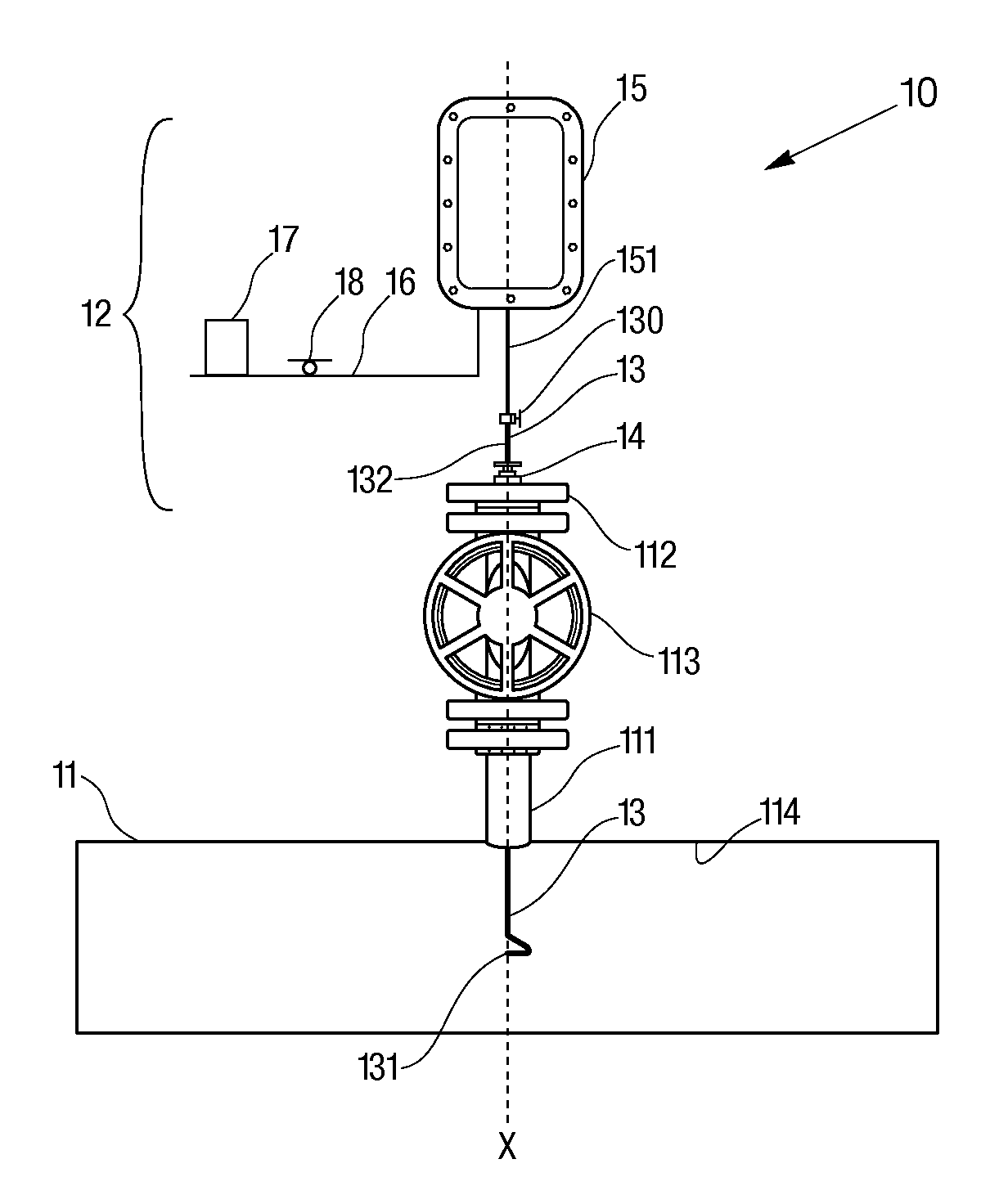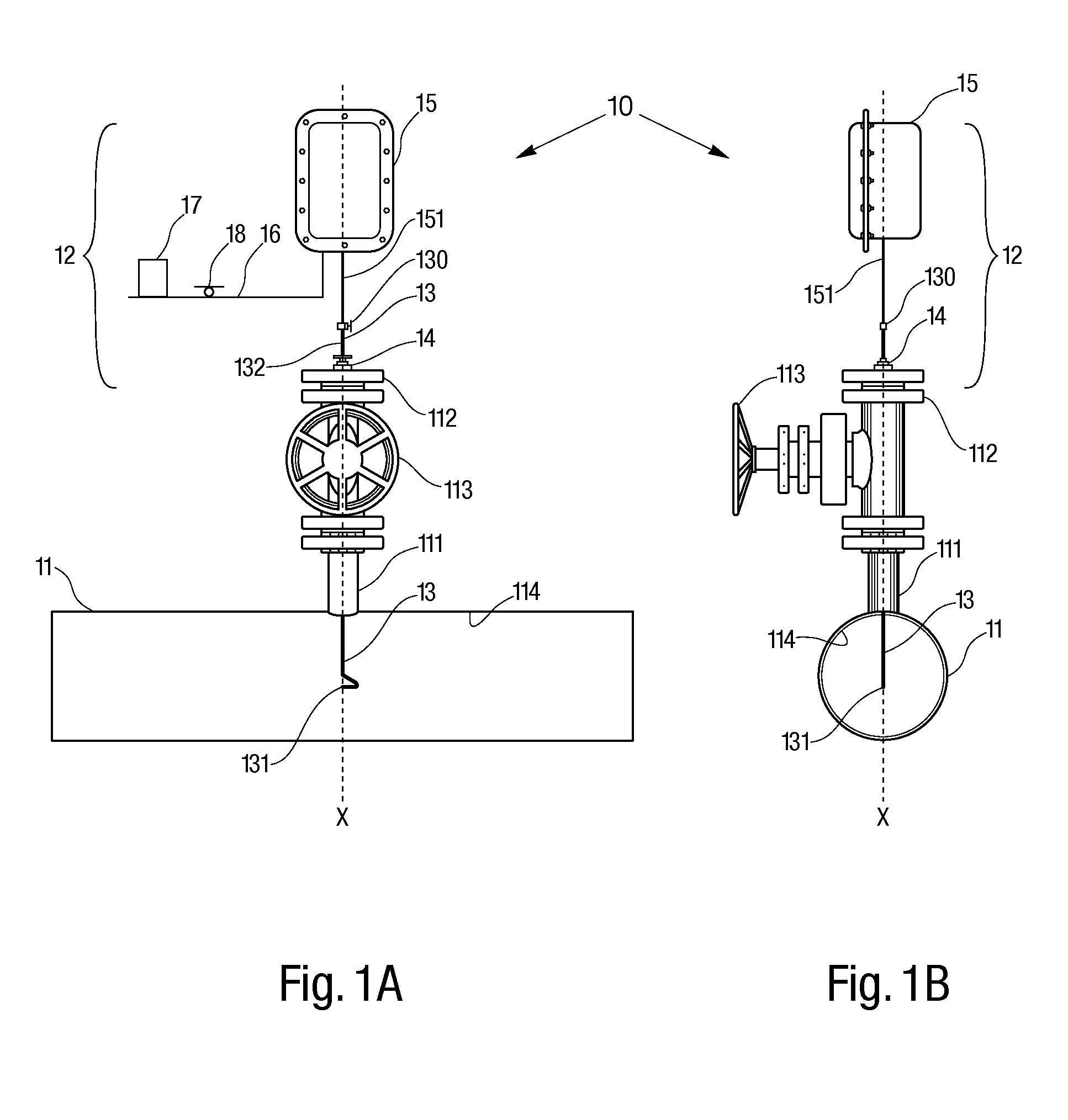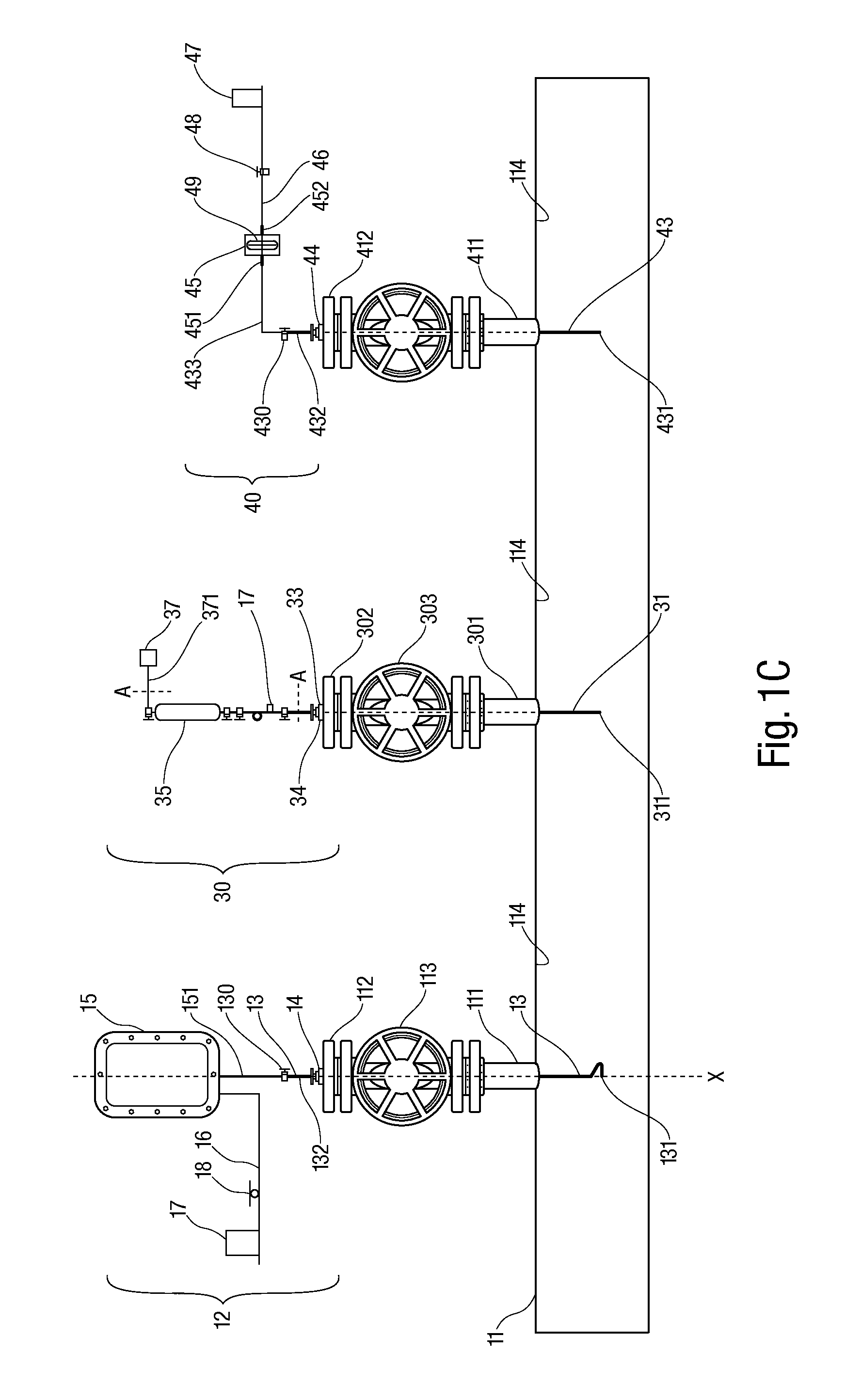Systems and Methods for Measurement and Analysis of Pipeline Contaminants
a technology of pipeline contaminants and systems, applied in the direction of sampling, instruments, measurement devices, etc., can solve the problems of foul heat exchangers, wear rotating components, and extremely sensitive contamination of turbines and other critical gas or fluid flow systems used in the energy industry, so as to minimize the presence of aerosol contaminants, and minimize the effect of aerosol contaminants
- Summary
- Abstract
- Description
- Claims
- Application Information
AI Technical Summary
Benefits of technology
Problems solved by technology
Method used
Image
Examples
Embodiment Construction
[0017]With reference to FIGS. 1A-B, the present invention provides, in one embodiment, a system 10 for use in the measurement and analysis of contaminants within a fluid flow system, such as pipeline 11. System 10, in an embodiment, may include a contaminant measurement assembly 12 designed to engage pipeline 11 by way of a sampling nozzle 111. Nozzle 111, as illustrated, may be situated at any desired point along pipeline 11 and provides an opening through which assembly 12 may communicate with the fluid flow within pipeline 11. To prevent fluid flow from escaping through the sampling nozzle 111 when assembly 12 may not be in engagement therewith or when assembly 12 is not in use, sampling nozzle 111 may include a valve, such as isolation valve 112, which can be actuated between an open and closed position, for example, by way of wheel 113.
[0018]In accordance with one embodiment, assembly 12 includes a probe 13 designed for transporting a fluid sample from within the pipeline 11 to...
PUM
| Property | Measurement | Unit |
|---|---|---|
| angle | aaaaa | aaaaa |
| diameter | aaaaa | aaaaa |
| volume | aaaaa | aaaaa |
Abstract
Description
Claims
Application Information
 Login to View More
Login to View More - R&D
- Intellectual Property
- Life Sciences
- Materials
- Tech Scout
- Unparalleled Data Quality
- Higher Quality Content
- 60% Fewer Hallucinations
Browse by: Latest US Patents, China's latest patents, Technical Efficacy Thesaurus, Application Domain, Technology Topic, Popular Technical Reports.
© 2025 PatSnap. All rights reserved.Legal|Privacy policy|Modern Slavery Act Transparency Statement|Sitemap|About US| Contact US: help@patsnap.com



